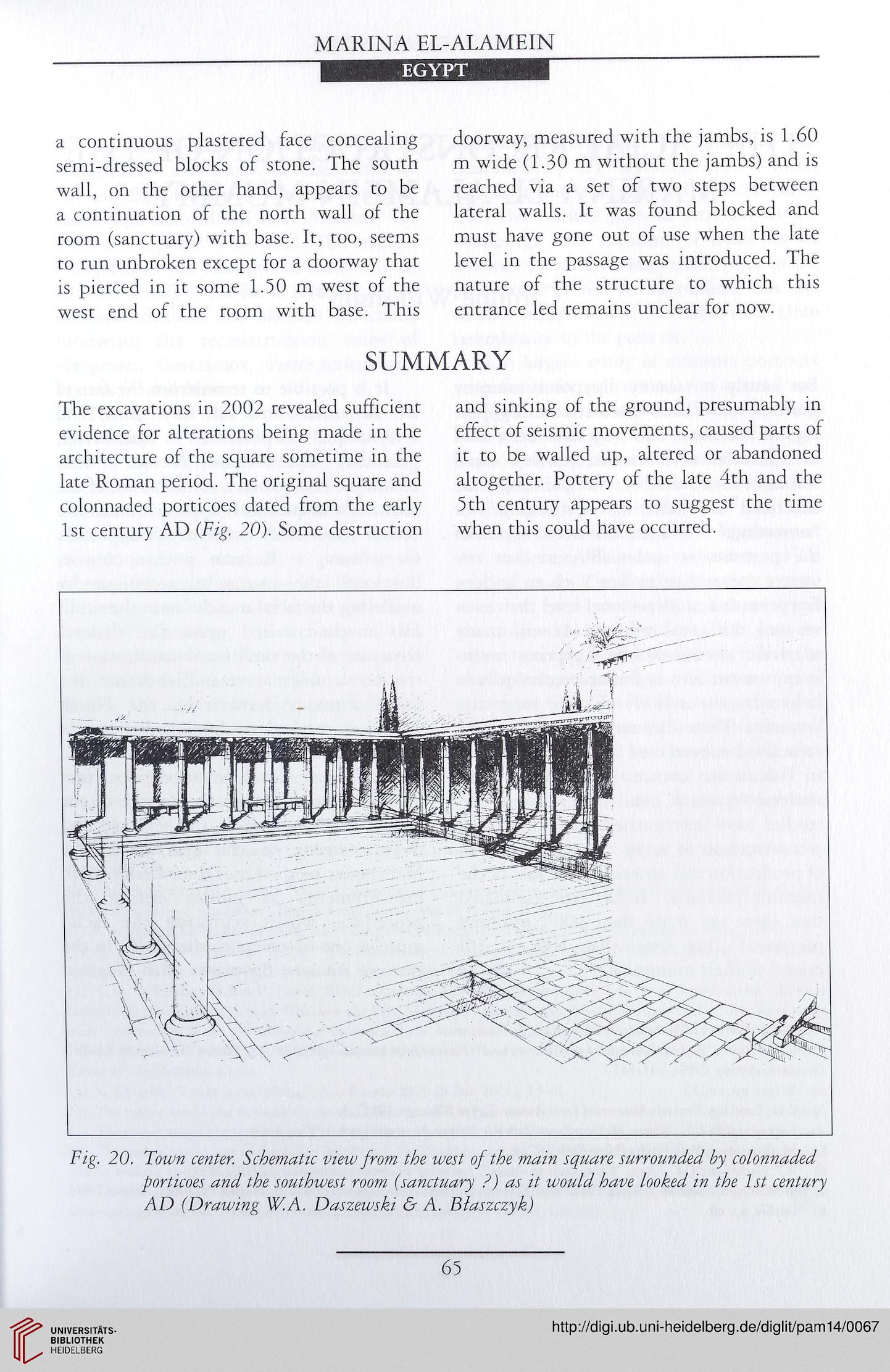MARINA EL-ALAMEIN
EGYPT
a continuous plastered face concealing
semi-dressed blocks of stone. The south
wall, on the other hand, appears to be
a continuation of the north wall of the
room (sanctuary) with base. It, too, seems
to run unbroken except for a doorway that
is pierced in it some 1.50 m west of the
west end of the room with base. This
doorway, measured with the jambs, is 1.60
m wide (1.30 m without the jambs) and is
reached via a set of two steps between
lateral walls. It was found blocked and
must have gone out of use when the late
level in the passage was introduced. The
nature of the structure to which this
entrance led remains unclear for now.
SUMMARY
The excavations in 2002 revealed sufficient
evidence for alterations being made in the
architecture of the square sometime in the
late Roman period. The original square and
colonnaded porticoes dated from the early
1st century AD {Fig. 20). Some destruction
and sinking of the ground, presumably in
effect of seismic movements, caused parts of
it to be walled up, altered or abandoned
altogether. Pottery of the late 4th and the
5 th century appears to suggest the time
when this could have occurred.
’’ s [
' -
PSpI pi 1
fmmf
CJ
Fig. 20. Town center. Schematic view from the west of the main square surrounded by colonnaded
porticoes and the southwest room (sanctuary ?) as it would have looked in the 1 st century
AD {Drawing W.A. Daszewski & A. Blaszczyk)
65
EGYPT
a continuous plastered face concealing
semi-dressed blocks of stone. The south
wall, on the other hand, appears to be
a continuation of the north wall of the
room (sanctuary) with base. It, too, seems
to run unbroken except for a doorway that
is pierced in it some 1.50 m west of the
west end of the room with base. This
doorway, measured with the jambs, is 1.60
m wide (1.30 m without the jambs) and is
reached via a set of two steps between
lateral walls. It was found blocked and
must have gone out of use when the late
level in the passage was introduced. The
nature of the structure to which this
entrance led remains unclear for now.
SUMMARY
The excavations in 2002 revealed sufficient
evidence for alterations being made in the
architecture of the square sometime in the
late Roman period. The original square and
colonnaded porticoes dated from the early
1st century AD {Fig. 20). Some destruction
and sinking of the ground, presumably in
effect of seismic movements, caused parts of
it to be walled up, altered or abandoned
altogether. Pottery of the late 4th and the
5 th century appears to suggest the time
when this could have occurred.
’’ s [
' -
PSpI pi 1
fmmf
CJ
Fig. 20. Town center. Schematic view from the west of the main square surrounded by colonnaded
porticoes and the southwest room (sanctuary ?) as it would have looked in the 1 st century
AD {Drawing W.A. Daszewski & A. Blaszczyk)
65




